Top Strategies to Control Drugstore Beetle Infestations


Understanding the Pest
The drugstore beetle, Stegobium paniceum, is a small but troublesome pest that can cause significant damage to food and stored products. Recognizing and understanding this beetle is the first step toward effectively managing it in your home.
Identification
These pests are identifiable by their length, typically measuring about 2.5 to 5 millimeters. They have a distinctive elongated shape, somewhat resembling a tiny cockroach. The color varies from brownish to dark brown, often appearing a bit hairy due to their tiny setae. Look for them in your pantry or food storage areas, as they are particularly attracted to products that contain carbohydrates and protein – from flour to nuts.
Their presence can often be detected through visible damage on packaging or a pest’s telltale frass – small brown pellets that may resemble coffee grounds.
Life Cycle
Understanding the life cycle of the drugstore beetle can shed light on why eliminating them can feel like a continuous battle. Their life stages include:
- Egg: Females can lay up to 100 eggs in suitable food sources. The eggs are tiny and oval-shaped, making them almost invisible to the naked eye.
- Larvae: After about a week, the eggs hatch into larvae. These larvae are whitish and have a distinctive curve to their body, and they feed voraciously on stored goods, causing significant damage.
- Pupa: Once they mature, they pupate and eventually emerge as adult beetles, starting the cycle all over again.
The entire life cycle spans about a month under ideal conditions, so swift action is essential.
"When it comes to drugstore beetles, a stitch in time saves nine. The sooner you act, the less damage you'll face."
Pest Prevention Strategies
Prevention can be your best ally against drugstore beetles. Keeping them at bay requires a blend of environmental management and simple physical barriers.
Environment Modification
Creating an inhospitable environment for drugstore beetles can go a long way:
- Keep Storage Areas Clean: Regular cleaning of your pantry and food storage areas is key. Crumbs and spills can provide an inviting atmosphere for these pests.
- Monitor Humidity Levels: They thrive in moist areas. Using a dehumidifier can help keep humidity levels low, discouraging not just beetles but also mold and other pests.
- Rotate Stock: When buying grains or starches, remember to use older products first, thus reducing the chances of the larvae having a food source.
Physical Barriers
Sometimes, the simplest solutions are the most effective. Consider employing measures such as:
- Airtight Containers: Store food items in airtight containers to block beetles from accessing your food supply. Glass or heavy-duty plastic is ideal.
- Seal Cracks and Crevices: Ensure that your pantry and kitchen areas are sealed tight. Inspect for small gaps in walls or around shelves that may serve as entry points.
Control Methods
If the beetles have established themselves, it’s time to consider control methods that can effectively eliminate them.
Chemical Control
While natural options exist, sometimes chemical solutions you find at the local hardware store can be effective:
- Pesticides: There are specific insecticides designed to target drugstore beetles. Always read labels meticulously and use as directed.
- Insect Growth Regulators (IGRs): These disrupt the development of beetles and can be effective, particularly when you know you have a heavy infestation.
Biological Control
On the natural side, consider utilizing beneficial insects like:
- Predatory Wasps: These tiny wasps can help control beetle populations by laying their eggs in the beetle larvae, reducing their numbers.
- Fungi: Certain species of fungi can act as biocontrol agents and are effective against beetles in specific conditions.
Understanding these aspects of drugstore beetles provides a solid foundation for creating an effective management plan. Awareness of how these pests operate within your home environment can make all the difference in achieving a pest-free household.
Additionally, for more information on pest management, you can review resources from CDC, University of California Agriculture and Natural Resources, or even community discussions on Reddit.
Prologue to Drugstore Beetles
Understanding drugstore beetles is crucial for anyone looking to keep their home and pantry safe from these pesky invaders. Often unnoticed until it’s too late, these small beetles can quickly turn a seemingly harmless food item into a source of frustration and dread. By recognizing their presence and understanding their habits, you can take effective measures to combat them.
This article serves as a comprehensive guide not only to identifying and understanding drugstore beetles but also to determining the best strategies for their elimination. With pests like these, early detection is key—making it essential to know what to look for and how to stop them in their tracks. By focusing on their life cycle, behaviors, and infestation signs, you’ll be equipped to take action before your stored food gets ruined.
Description and Identification
What Are Drugstore Beetles?
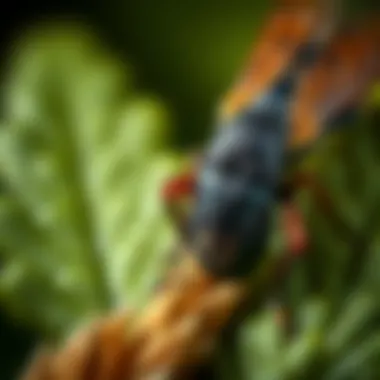

Drugstore beetles, scientifically known as Stegobium paniceum, are small brownish pests that primarily infest stored food products. These beetles thrive in various household environments, often targeting items such as spices, dried fruits, and even herbs. What sets drugstore beetles apart from other pests is their adaptability; these little creatures can slip through small gaps and enter your home with any food item you purchase. Understanding what drugstore beetles are helps in formulating informed strategies to keep them at bay.
Physical Characteristics
When it comes to identifying drugstore beetles, size and color play a significant role. Generally, they measure about 2.5 to 4.5 millimeters in length and feature a smooth, elongated body with a distinct brownish appearance. Their hard outer shell adds a layer of protection, making them difficult to eliminate once established. Their small size means they can easily hide in cracks and crevices, contributing to their potential for unnoticed infestation. Understanding these physical traits is beneficial, as spotting them early can significantly enhance your chances of successful eradication.
Common Misidentifications
In the world of pests, misidentifying drugstore beetles can lead to ineffective treatments. Many homeowners confuse them with other household pests, especially as they can resemble more benign insect species like the cigarette beetle. Recognizing the subtle differences, such as the shape of antennae and body patterns, can save you from unnecessary complications while attempting control measures. By knowing the unique identifiers of drugstore beetles, you can apply the right elimination strategies swiftly and effectively.
Life Cycle and Behavior
Stages of Development
The life cycle of drugstore beetles consists of four main stages: egg, larva, pupa, and adult. Understanding these stages is crucial for effective control. Female beetles lay eggs in cracks or directly on food items, and within a few weeks, the larvae hatch and begin their feeding frenzy. They munch away, growing through several molts before entering the pupal stage. Each stage presents a unique opportunity for eradication; for example, targeting larvae can reduce future adult populations that cause damage. Understanding their life cycle drives the focus to the most vulnerable stages, optimizing your control efforts.
Feeding Habits
Drugstore beetles exhibit indiscriminate feeding habits, consuming a wide range of food products, including grains, cereals, and even animal-derived goods. They have the uncanny ability to infest stored foods, often causing significant damage before being detected. Their preference for processed goods makes them a significant threat to pantries everywhere. Acknowledging their feeding behaviors allows you to implement proactive strategies, such as regularly checking stored goods and maintaining cleanliness in food storage areas.
Reproductive Behavior
With an impressive reproduction rate, drugstore beetles contribute to swift population growth. A single female can lay up to 100 eggs during her lifetime. This prolific breeding takes place primarily in conducive environments, such as warm, moisture-rich areas. If left unchecked, a small infestation can grow exponentially, leading to extensive damage and waste. Understanding their reproductive patterns is vital, allowing you to curtail their spread before it spirals out of control.
Assessing Infestation Risks
Understanding the risks associated with drugstore beetle infestations is a vital step in maintaining a pest-free environment. It can save you both time and money, and more importantly, protect your stored products from spoiling due to beetle damage. The process of assessing infestation risks encompasses recognizing early signs of an invasion and identifying vulnerable areas that may become hotspots for future issues. This knowledge is essential for any housewife or homeowner aiming to safeguard their household items and maintain a well-organized space.
Signs of Infestation
Visible Damage to Products
Visible damage to products is often the most apparent indicator of a drugstore beetle infestation. When inspecting your stored goods, keep an eye out for holes or irregular surface damage on packaged items. It could be anything from flour to nuts; these beetles have a preference for starchy products. The damage is not merely cosmetic; it compromises the item’s quality and safety for consumption. Identifying this damage early can redirect your efforts from clean-up to prevention.
- Key characteristic: The evidence of chewing or tunneling.
- Benefits: Spotting damage early helps to minimize the loss of food and other products.
- Unique feature: Often, this damage is accompanied by fine powdery frass, a clear sign of the beetle's feeding habits.
- Advantages: Swift action can be taken to remove infested items, preventing the spread to other products in your pantry.
Presence of Adult Beetles
Finding adult beetles themselves is another strong sign of an infestation. The presence of these adult beetles, which are small, cylindrical, and dark brown in color, means it's time to act. Spotting them crawling around on shelves or within your stored items highlights a significant problem—it suggests that eggs have already been laid, leading to more beetles in the future.
- Key characteristic: Their distinctive shape and color make them identifiable, even to the untrained eye.
- Benefits: Early detection by visual sighting can lead to immediate control measures.
- Unique feature: Adult beetles can also fly, although they tend to stay near food sources.
- Disadvantages: Relying solely on sight may cause slow reactions, as some infestations may be more hidden.
Larvae and Exuviae
Noticing larvae or exuviae (the shed skins of larvae) can confirm that you are dealing with a drugstore beetle issue. Larvae are small, white worms that usually feed on materials that adult beetles have infested. Their presence indicates that the infestation has progressed, often higher in numbers than the adult beetle stage. This can escalate the urgency to intervene more effectively.
- Key characteristic: The presence of small, white or cream-colored larvae that can occasionally be found in product packaging.
- Benefits: Recognizing larvae and exuviae can indicate the lifecycle stage of the beetles, guiding a tailored pest control strategy.
- Unique feature: Exuviae are a telltale sign that larvae have been resident in the same area, further implying the need for comprehensive cleaning.
- Disadvantages: If larvae are detected, it can mean a more serious situation with more extensive measures needed to eradicate them.
Assessing Vulnerable Areas
Common Hiding Spots
Drugstore beetles are clever little creatures, often seeking out quiet corners of your home to nest and thrive. Common hiding spots include kitchen cabinets, pantry shelves, and even behind appliances. These locations provide the darkness and security the beetles seek. They can easily invade unnoticed if vigilance isn't maintained.
- Key characteristic: They prefer areas that serve as hiding spots near their food sources.
- Benefits: Identifying and targeting specific areas can streamline your pest control efforts.
- Unique feature: Regular cleaning and sweeping can uproot hiding beetles well before infestation.
- Advantages: Knowing these spots allows you to take preventive measures swiftly.
Storage Conditions
The conditions in which you store your food can either protect it or make it fertile ground for infestations. High humidity and poor ventilation can be a beetle’s paradise, allowing them easily access food and conducive conditions for reproduction. Keeping humidity levels low and ensuring adequate air circulation can play a significant role in preventing infestations.
- Key characteristic: Beetles thrive where conditions are damp and neglected.
- Benefits: Implementing better storage practices can naturally deter infestations.
- Unique feature: Adjustable climate control devices can help maintain optimal storage conditions for all foods.
- Disadvantages: Awareness is key, but if neglected, the consequences can be severe.
Product Types
Some products are more attractive to drugstore beetles than others. Items like dried fruits, spices, and grains are notably susceptible. These beetles have a penchant for certain types of food, which can help you focus your preventive efforts more effectively. The more you know about the types of products at risk, the better prepared you’ll be.
- Key characteristic: The composition of the product itself can greatly influence its vulnerability.
- Benefits: Understanding which items to prioritize can lead to strategic storage.
- Unique feature: Specific packaged foods tend to attract beetles due to their open structure, making their insides easier to access.
- Disadvantages: Neglecting storage methods for riskier products can fast-track an unmonitored infestation.
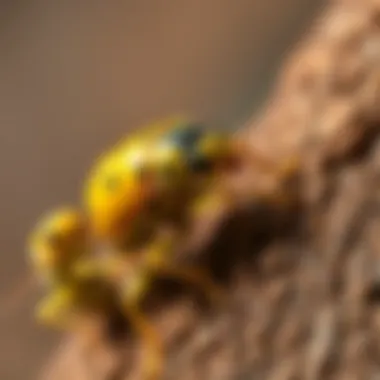
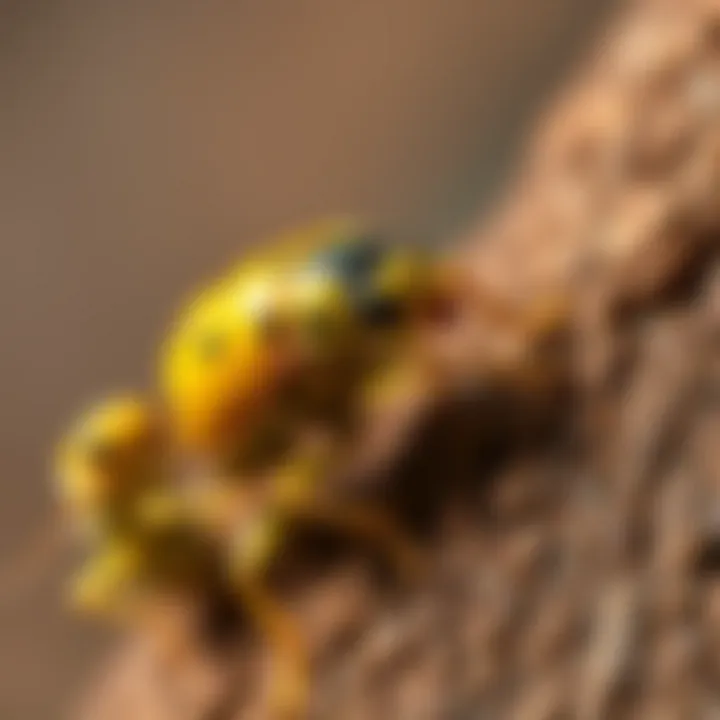
In summary, assessing infestation risks is the cornerstone of effective pest management. By understanding the signs of infestation and identifying vulnerable areas, homeowners can take preemptive measures to protect their homes from drugstore beetles. Not only does this save products and money, but it ultimately leads to a peaceful, pest-free living environment.
Control Methods for Drugstore Beetles
Managing drugstore beetles effectively requires a well-rounded approach. The significance of employing varied control methods lies in ensuring that your strategy addresses the entire lifecycle of the pest. When you use a combination of chemical and natural solutions, you position yourself to combat these beetles at multiple fronts. You steer clear of becoming overly reliant on one method which can lead to resistant populations.
Chemical Control Strategies
Recommended Insecticides
Choosing the right insecticides can make a world of difference. Not all insecticides are created equal; it’s essential to pick ones that specifically target the drugstore beetle. Products like Bifenthrin and Pyrethroids fall into this category. The strength of these insecticides is that they not only kill adult beetles but also have a residual effect that keeps the area protected for several weeks. However, a downside is that they can also impact beneficial insects, so using them strategically is key.
Application Techniques
Once you have the right insecticides, how you apply them matters just as much. Proper application helps ensure that the insecticides reach the beetles in their hiding spots. Techniques such as using a sprayer for cracks and crevices or applying dust formulations to corners can yield better results. Quick application after identifying areas of infestation ensures the chemicals do their job effectively. The downside is that these techniques might require repeated applications based on the severity of the infestation, which could be time-consuming.
Safety Precautions
Although insecticides can be helpful, safety precautions are a must. Always read the label instructions carefully before applying any chemical solutions. Protect yourself by wearing gloves and a mask; this ensures you minimize any adverse effects on your health. Moreover, keeping children and pets away from treated areas is profoundly important. One unique aspect is that some insecticides require specific re-entry times, so knowing these guidelines is crucial to your safety and the environment around you.
Natural and Eco-Friendly Solutions
Essential Oils and Natural Deterrents
As more people lean towards greener solutions, essential oils like peppermint and eucalyptus are rising in popularity as natural repellents. These oils can help deter drugstore beetles due to their strong scents. A simple blend of water and a few drops of these oils, sprayed in areas prone to infestation, can aid in keeping these pests at bay. However, the downside is these solutions may need frequent reapplication, especially after cleaning or rain.
Traps and Baits
Using traps can be an effective way to monitor and reduce drugstore beetle populations. Sticky traps placed near food storage areas can catch adult beetles and prevent them from laying eggs. They are relatively inexpensive and simple to use, making them a favorite among homeowners. However, they might not eliminate an existing population entirely, so they are best used in tandem with other control methods.
Attractants for Beneficial Insects
Encouraging beneficial insects that prey on drugstore beetles can create a natural balance in your environment. For example, introducing ladybugs or specific types of wasps can help keep insect populations in check. This method provides a long-term solution without the need for continuous chemical applications. The downside might be that relying solely on this method requires you to give it time for the beneficial insects to establish themselves, which can take longer than expected.
By integrating chemical and eco-friendly methods, homeowners can develop a multi-faceted approach to effectively manage drugstore beetle infestations.
Overall, understanding both chemical and natural control methods equips you with the tools needed to tackle drugstore beetles proactively. Taking the time to assess the best practices for your situation paves the way for a beetle-free environment.
Preventing Future Infestations
Preventing future infestations of drugstore beetles is an essential part of maintaining a pest-free environment. Once a colony establishes itself, it can quickly multiply, leading to significant damage to food products and other stored goods. By adopting proactive measures, you not only minimize the risk of an infestation but also safeguard your household from the potential health risks associated with these pests. Understanding the nuances of storage practices, monitoring, and maintenance can help provide a robust defense against these unwanted guests.
Best Practices for Storage
Proper Packaging Techniques
The core element of keeping drugstore beetles at bay lies in how you package your products. Utilizing airtight containers can be a game changer. Airtight means just that—no air is escaping or entering, which creates an inhospitable environment for beetles. Unlike standard paper or plastic bags, which can be easily penetrated or chewed through, good packaging acts as a barrier. This makes it a popular and effective choice. However, remember that your containers need to be made of sturdy materials, like glass or thick plastic, because thinner items are more susceptible to damage. Packaging unprotected goods leaves them vulnerable to these critters.
Temperature and Humidity Control
Another vital aspect of prevention is keeping a close eye on temperature and humidity levels. Drugstore beetles thrive in damp and warm environments. Maintaining cool and dry conditions in your pantry or storage space can hinder their growth. This can be achieved by using dehumidifiers or simply ensuring good air circulation. It’s not just about comfort—lower humidity levels retard the beetles' metabolism, slowing their development significantly. Yet, keep in mind that extreme fluctuations in temperature can also affect the quality of your food products. Thus, a balance is key.
Regular Inventory Checks
You may not think about checking your pantry often, but routine inventory checks can help spot signs of infestation early. When you inspect your products regularly, you can quickly see if something seems off—like unusual holes in packaging, or even some larvae sneaking around. Catching the little buggers early helps nip the problem in the bud before it spirals out of control. Plus, staying organized might reveal items that have been lurking for too long, thus encouraging better food rotation.
Monitoring and Maintenance
Routine Inspections
Regular inspections play a crucial role in preventing future infestations. Setting a schedule—maybe monthly—gives you the chance to stay ahead. During these inspections, look for any signs of beetles or their larvae. Checking areas such as edges of shelves, corners, or even the underside of items can be fruitful. This vigilance acts as a first line of defense and can aid in spotting minor issues before they turn serious.
Identifying New Threats
Being proactive about identifying new threats is just as important as monitoring known ones. Beetles can hitch a ride into your home through new products—especially food items from the store. Thus, when bringing in groceries, scrutinize packaging closely for any potential pests. A keen eye can save you from future headaches. It's beneficial to learn about the latest pest trends to remain updated on potential threats that could arrive.
Community and Professional Resources
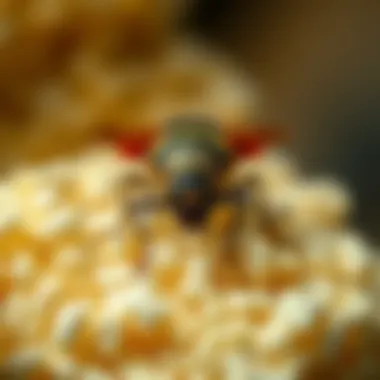
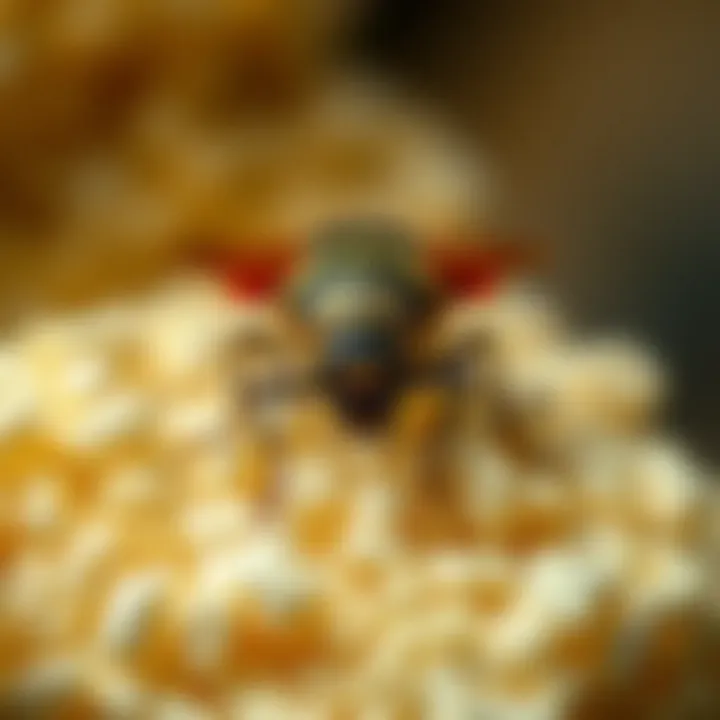
Sometimes professional help is essential. Joining community forums online or local groups can connect you with people battling the same issues, offering valuable tips and support. If the situation seems overwhelming, don't hesitate to reach out for professional pest control services. They have access to expert knowledge on handling infestations effectively. Just be sure to choose reputable ones with proven track records. Often, they can help you identify the root cause of the problem and suggest preventive measures for the future.
"An ounce of prevention is worth a pound of cure." In the context of drugstore beetles, taking preventive steps could spare you a heap of trouble down the line.
Educational Resources and Further Reading
Navigating the issue of drugstore beetles can be quite a daunting task for many homeowners, especially when dealing with infestations that seem to come out of nowhere. One of the best strategies to combat this is to arm yourself with knowledge. Educational resources and further reading are crucial in understanding these pests and managing them effectively. By engaging with expert articles, case studies, and new trends in pest control, you provide yourself with a well-rounded view of the issue at hand. This kind of knowledge can be the difference between a minor nuisance and a major infestation.
In this section, we will delve into several valuable resources that will help you stay informed and proactive against drugstore beetles.
Expert Articles and Studies
Research on Drugstore Beetles
Research on drugstore beetles offers fundamental insights into their biology and behavior. It provides detailed information on their life cycle, feeding habits, and effective management strategies. The depth of this research allows homeowners to see beyond surface-level issues and really understand the why and how these beetles operate. One key characteristic of this research is the focus on specific life stages and environmental factors that promote or deter infestations. This research is beneficial for anyone looking to develop a tailored approach to managing their pest issues.
A unique feature of such research is the emphasis on scientific methods to track beetle populations, helping homeowners recognize when intervention is needed. However, some studies may focus on lab conditions which might not fully represent the complexities of home environments. Yet, the bases are invaluable when making informed decisions.
Case Studies on Effective Control
Case studies showcasing successful control methods for drugstore beetles highlight practical applications of established theories. These narratives often detail real-world scenarios, providing a relatable framework from which others can draw inspiration. One of the key aspects of these case studies is their focus on results, breaking down what worked and what didn’t. This approach helps individuals understand the nuances of pest management, making it a popular choice among those seeking evidence-based practices.
The unique feature of these studies lies in their field-tested results which can offer a wealth of practical strategies. Though, a potential drawback is that outcomes can be situational, meaning what works in one home may not result in the same success in another.
Trends in Pest Management
Trends in pest management reflect the evolving landscape of control tactics and tools available to homeowners. An emerging key characteristic is the increasing shift toward eco-friendly solutions, which many modern households prioritize. This makes it a beneficial resource as it aligns with broader environmental concerns.
One standout feature in these trends is the integration of technology, such as apps and innovative pest-control products, that make it easier for homeowners to understand and tackle their issues. However, while these trends often promise efficiency and sustainability, they can also lead to confusion, especially as new products flood the market without adequate information accompanying them.
Tools and Applications
Useful Apps for Pest Identification
Having the right tools on hand can dramatically improve how we handle pests. Useful apps for pest identification serve as an immediate resource to figure out if what you're dealing with is indeed a drugstore beetle or something else. The primary advantage of these apps is their convenience; you can identify pests from your phone, which saves time and effort.
Their unique feature includes image recognition technology that allows users to take a picture of a pest, providing instant feedback. One drawback, however, is that these apps sometimes rely on subjective user-uploaded images, which might lead to misidentification.
Pest Control Kits
Pest control kits specifically designed for drugstore beetles pack everything one might need into a single package. This coordinated effort is a major advantage, ensuring you have the right solutions at your fingertips. A standout feature of these kits is the inclusion of not just treatments but also educational materials that guide users through the pest-control process.
However, the downside can be the price involved. In some cases, these kits can be quite expensive, which might deter some users from opting for them, especially if they are unsure of their pest situation.
Community Platforms for Knowledge Sharing
Community platforms for knowledge sharing allow individuals to engage, share experiences, and ask questions about pest management. These platforms serve as a valuable resource by offering anecdotal evidence and community support, which can be encouraging for those dealing with infestations.
A key characteristic of these platforms is their collaborative nature, allowing for a diversity of opinions and solutions. The unique attribute is that they often have an active user base that can provide real-time advice. On the flip side, differing experiences and opinions can sometimes lead to conflicting information, so users should take what they read with a grain of salt.
By tapping into these educational resources and tools, homeowners can equip themselves with the knowledge and strategies necessary to tackle drugstore beetle issues effectively. This path not only enhances pest management efforts but also fosters a more informed approach to home maintenance.
Finale
When it comes to tackling the presence of drugstore beetles, several layers of strategies and insights can make the difference between a minor nuisance and a significant problem. In understanding the intricate lives of these pests, one gains not just knowledge, but power. The sections discussed in this article have unfolded various elements vital for aiding readers in correcting infestations effectively.
Summing Up Key Points
- Identification: Recognizing drugstore beetles is the first step. Their brown oval bodies, which can be mistaken for other pests, underscore the need for familiarity.
- Infestation signs: Being vigilant for droppings, adult presence, or larvae can provide early warnings, saving time and resources in the long run.
- Control methods: Whether through chemical solutions like Pyrethrins or leveraging natural remedies like essential oils, the right choice depends on individual comfort and situation.
- Preventative measures: After an infestation is effectively controlled, the focus should shift to maintaining the integrity of stored items through proper packaging and regular checks.
Each point helps to weave a safety net against these beetles. By comprehensively addressing both control and prevention, one can significantly lower the chances of future infestations.
Encouragement for Proactive Management
It’s crucial to remember that proactive management can be the strongest ally in the fight against drugstore beetles. This pest doesn’t just strike once; it can reappear if subsequent precautions are not taken. Here are a few encouragements to consider:
- Regularly inspect pantry items and stored food; check for unusual signs that might indicate an incursion.
- Create a routine that includes checking temperature and humidity in storage areas, as drugstore beetles thrive in moist environments.
- Engage with communities that share such concerns, like forums on sites such as Reddit or Facebook, where common practices and strategies are exchanged.
Taking steps now, no matter how small, will make a significant difference later. Engaging in proactive behaviors not only protects food resources but also brings peace of mind. In the end, it’s about ensuring a safe and healthy environment for you and your family.
"An ounce of prevention is worth a pound of cure."
By adopting these strategies, readers can ensure their homes remain a sanctuary, free from the disturbances caused by drugstore beetles.







